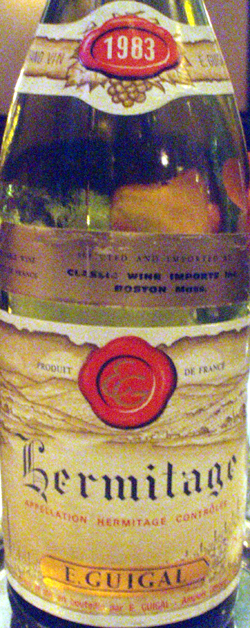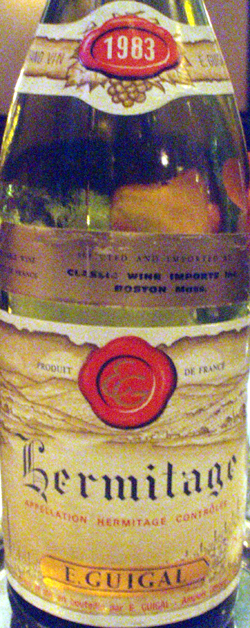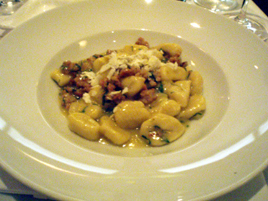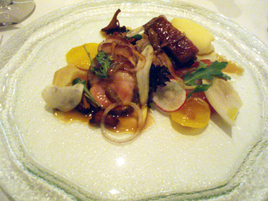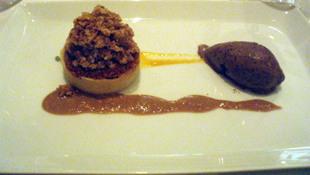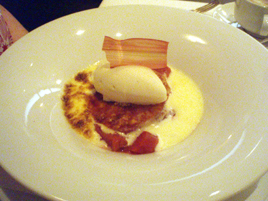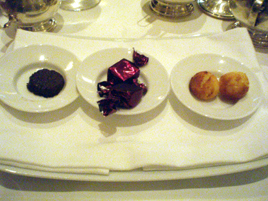Ciano
 Monday, November 15, 2010 at 11:47AM
Monday, November 15, 2010 at 11:47AM 

Note: Ciano closed in April 2013. Management says that it will re-open on the Upper East Side in August 2013 as Cucina Ciano, with one of chef Shea Gallante’s assistants, but without Gallante himself.
*
Shea Gallante is back. The chef who made Cru into one of the city’s best restaurants, only to see his work undercut and eventually rendered irrelevant by the Great Recession, has his own place again: Ciano.
In an era of increasing informality, Cru was one of the few restaurants that actually got fancier between its 2004 opening and our most recent check-in, two years ago. But after the fall of Lehman Brothers, the restaurant was forced to reverse field, adopting a less expensive à la carte format and slashing the prices on its legendary wine list by 30 percent.
Gallante never explained his departure. A plausible guess is that when Cru became unsustainable in its original form, he preferred to go out on his own terms. Sure enough, Cru is now closed. Gallante went back briefly to David Bouley’s empire (from which he’d come), then did some consulting in Westchester, and is now back in New York.
Ciano occupies the pretty space that was formerly Beppo. I was never there, but as the re-fit was brief, I assume that a lot of the décor was retained. It’s a beautiful setting for what I call adult dining, with a long polished wood bar, flowers and tablecloths on every table, and a roaring fireplace.
The Italian serving staff—all men, and none of them youngsters—are likely carry-overs too: where else would they find so many waiters of that age on short notice? The patrons also skewed to middle-aged, though not exclusively so. Perhaps many of them had been Beppo regulars, and wanted to see if the new place measures up.
 There was always an Italian accent to Gallante’s cuisine at Cru, but it is overtly Italian here. Prices are roughly in line with Cru’s à la carte phase, but without the tasting menus. No one would call it inexpensive. Insalate are $12–15, antipasti $11–18, pastas $19–28 (smaller portions listed for about 1/4th less), secondi $28–35 (not counting the ribeye for two, $48pp), and contorni $10.
There was always an Italian accent to Gallante’s cuisine at Cru, but it is overtly Italian here. Prices are roughly in line with Cru’s à la carte phase, but without the tasting menus. No one would call it inexpensive. Insalate are $12–15, antipasti $11–18, pastas $19–28 (smaller portions listed for about 1/4th less), secondi $28–35 (not counting the ribeye for two, $48pp), and contorni $10.
Beyond Gallante’s sure hand in the kitchen, what elevates Ciano is its wine program, run by his former Cru colleague, John Slover. As he does at Bar Henry, Slover sells a slew of wines by the half-bottle — the majority of the list, in fact. And we’re not talking about the cheap stuff, either. Real wines of interest, bottles with age, are available by the half, at 50 percent of the bottle price. This is a boon for the customer, but it clearly entails a risk for the restaurnant, as an open bottle quickly deterioriates if another no one buys the other half reasonably promptly.


We began with two of the tenderest Roasted Veal Meatballs ($18; above left) that I’ve had in a long time, so smooth they could have been Kobe beef. Gnocchi ($28; above right) with black truffle butter and 36-month parmigiano were a creamy delight.


I loved the Berkshire Pork Roast ($32; above left), but it exemplifies the challenge of attracting customers to a restaurant like Ciano. Gallante is clearly sourcing the best beef. With a Barolo vinegar and grilled maitake mushroom sauce, he isn’t stinting on the other ingredients. But diners may ask, “What’s with $32 for pork shoulder?” Lamb Chops ($33; above right) were so rare that I thought they could still “Baaaaa,” and that’s a lot of money for two measly chops.
The experienced server was more polished than one usually finds at a new restaurant, and he didn’t hesitate to share his opinion. He was quite adamant that the smaller-size pasta orders (generally $5–6 less than the full-size ones) aren’t worth the tariff. And when we asked that our shared appetizer and pasta courses be brought out separately, he insisted it would confuse the kitchen, which we found very difficult to believe. Apart from that, he was on top of things.
Obviously, this isn’t bargain dining . Gallante’s technical ability is rock-solid, but he is cooking in a simpler, from-the-gut, style than he did at Cru. Success here will depend on people being willing to spend a bit more for more polished versions of dishes that are available less expensively at more stylish destinations.
I, for one, am happy to do that, but I’m not the guy that restaurant investors are targeting these days.
Ciano (45 E. 22nd Street, east of Park Avenue, Gramercy/Flatiron)
Food: **½
Service: **
Ambiance: **
Overall: **½


